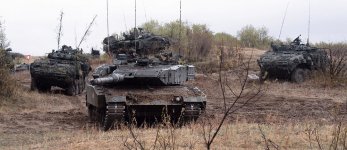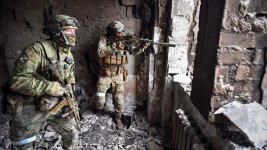Funny that you should mention that as I thought there was another jump status ResF unit other than the QOR and was surprised to learn QOR was the only one these days. I'm perhaps overdoing the jump capability as I did add another one with the Voltigers to give 5 Bde a little depth and besides I think its a great draw to bring in keen young ResF soldiers if there's an opportunity for them.
That's exactly right.
The fact is that working with existing infrastructure and unit type distribution across the country makes it difficult to keep things grouped as tightly as one wants. It's not a big problem as long as you have independent 140 man battalions grouped under an administrative headquarters but the moment you convert those to a 140 man companies that report to an operational battalion headquarters then the exercise becomes difficult except in the biggest urban centres. As I mentioned above, that shouldn't be the big issue most of us here in Canada think as the Guard in the US exists mostly in company sized armouries spread all around urban and rural areas.
Here's a quick view of Florida NG and USAR units the vast majority of which are company or detachment sized entities.
View attachment 74717
View attachment 74716
You can see how widely they are distributed throughout the state in company sized armories. About half of these units belong to Florida's 53 IBCT out of Tampa but just as many belong to higher units and formations outside the state such as A Co of the 3 Bn of the 20th Special Forces Group in Ocala. The Bn is headquartered at Ft Blanding has another company in North Carolina and reports to its group headquarters in Birmingham Alabama.
If you discount BC, there's a pretty good dividing line for the Army based on the Ottawa valley and the Quebec Ont border north of that. The Reg F has a brigade on either side of that and one right on the border. Similarly numbers of ResF units balance out very roughly as between the east and the west with (based on some old figures) with roughly 2,400 on the Prairies, 5,200 in Ont, 4,200 in Que and 3,000 in the Maritimes. The question then is what do you do with BC's 1,500? It's very hard to put them into a mechanized force but they are quite well suited for light infantry and associated roles.
If you accept that the the west is the best place for mech training (Wainwrights and Shilo) then you are stuck with the fact that a 30/70 structure requires 1/3rd of 1 CMBG and all of the ResF in the Prairies to make one bde which pushes the other two bdes and their sustainment infrastructure into the population centres of Ont. Concurrently the weigh the light force towards a 70/30 or so establishment you need to add 2 Bde to the eastern divide (make the boundary Hwy 17 rather than the river) and you end up assigning much of 33 Bde to be the ResF roundout to 2 Bde. On top of that 33 Bde is the weakest of Ontario's three brigades and wouldn't be able to form the core of a good mech bde which slides you over to Montreal for the 3rd mech bde. It is well suited for it.
BC will always be a problem for RegF/ResF organizational structures. It's less of a problem where the demands on the ResF units isn't high and ResF leadership is left to their own devices on the other side of the mountains. BC will always be an outlier regardless of what criteria you use for the organization. A simple geographic grouping with the "Army of the West" might be seductive but is impractical once you add a functional break with a Europe-focused division. I prefer 39 Bde to have a coastal focus which functionally puts it into the "Light" Division.
Functional command trumps geographic in my books.







